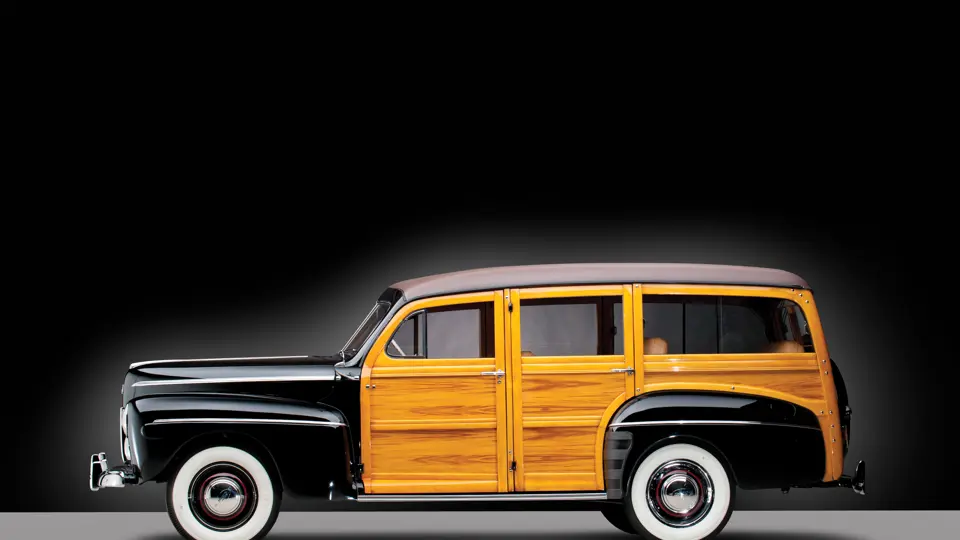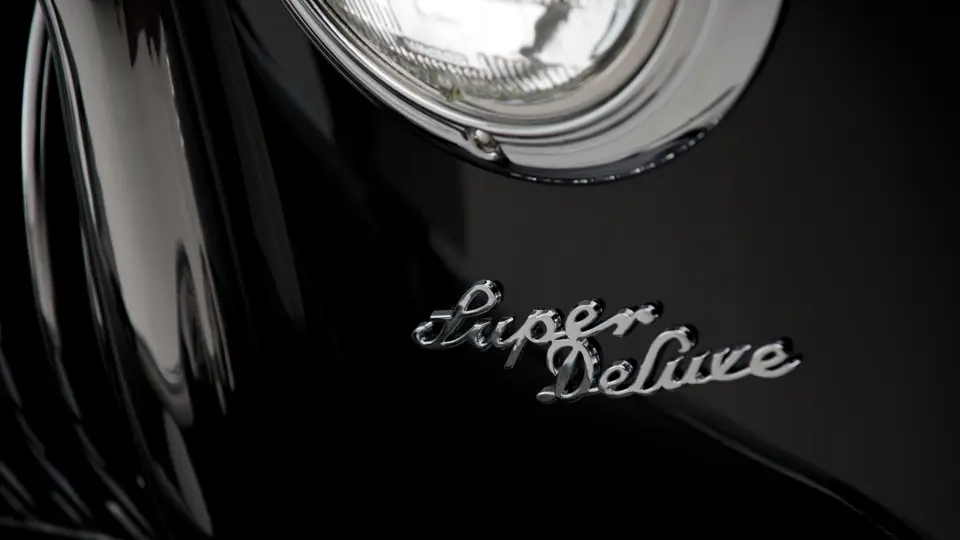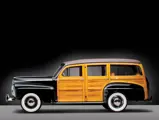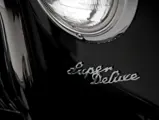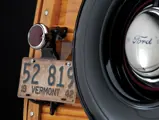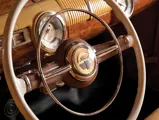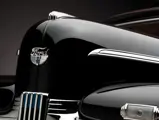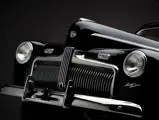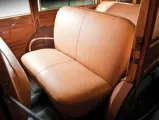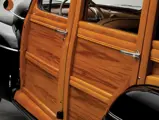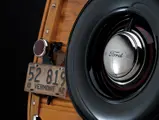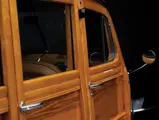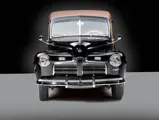MODEL 21A. 85 bhp, 221 cu. in. L-head V-8 engine, three-speed manual transmission, solid front axle and live rear axle with transverse semi-elliptic leaf springs, and four-wheel hydraulic drum brakes. Wheelbase: 114"
United States automobile production was halted on February 10, 1942, barely two months after war had been declared on Germany and Japan. Preparations for armed conflict, however, had been in the air for months, indirectly boosting the sales of 1941 models, as the public sensed that it might be their last chance for a new car.
In May 1940, President Roosevelt chose William Knudsen, of General Motors, to head a new National Defense Council. Already, automakers were searching for substitutes for metals likely to become scarce: zinc, nickel, and chromium. On May 24, 1941, the president declared a state of national emergency. Shortly thereafter, the nine auto manufacturers made an agreement with Knudsen to reduce 1942 production by 20% from projected schedules. Later, the reduction rose to 50%, and GM announced there would be no new models for 1943.
The customary new model introductions began in August 1941. Willys announced that molybdenum-iron pistons had replaced aluminum ones, where Chrysler’s had become cast iron. Chevrolet substituted steel stampings for zinc castings, and whitewall tires became extinct, partly because zinc was used in their sidewalls. Ford devoted a full page in Ford News to such changes as plastics for metal-plated interior trim and a 98.7% reduction in the use of magnesium.
On October 24th, the War Production Board issued Passenger Car Limitation Order L-2b, which decreed that from December 16th, bright trim could be used only on bumpers and bumper guards. This order was modified so that materials already in stock could be used if painted, resulting in the so-called “blackout trim” on some models. Finally, the new quotas for February 1942 were revoked, and manufacturers were given until February 11th to fill their January allotments. Ford and Pontiac were the last to do so, on the tenth.
Reportedly used by a New Hampshire resort, the Dingman Collection’s 1942 Ford Station Wagon was acquired in July 2003. It was then sent to Lowrey Auto Restoration for a full restoration, the cost of which approached $205,000. The wood is original to the car and overall, presents extremely well. The metal components, which have correct contours, are painted black. The finish shows no flaws. Correct brown grained artificial leather is used on the roof, and the seating is upholstered in brown leather. Black rubber mats are used on the floors. The interior is highlighted by a burl wood grain dashboard with exceptional plastic, which appears original. Eighty-four thousand miles are currently indicated on the odometer, which is believed to be correct original mileage. Accessories include a hot-water heater and dual door-hinge rearview mirrors.
The war-shortened 1942 model year curtailed production drastically. While wagon production had surpassed 15,000 in 1941, slightly more than half of them were Super Deluxe models; in the following year, just 5,483 upscale wagons left the production line, and a scant 567 of them were Deluxe versions. As a result, any surviving 1942 Ford station wagon is rare. This, certainly, is one of the best.
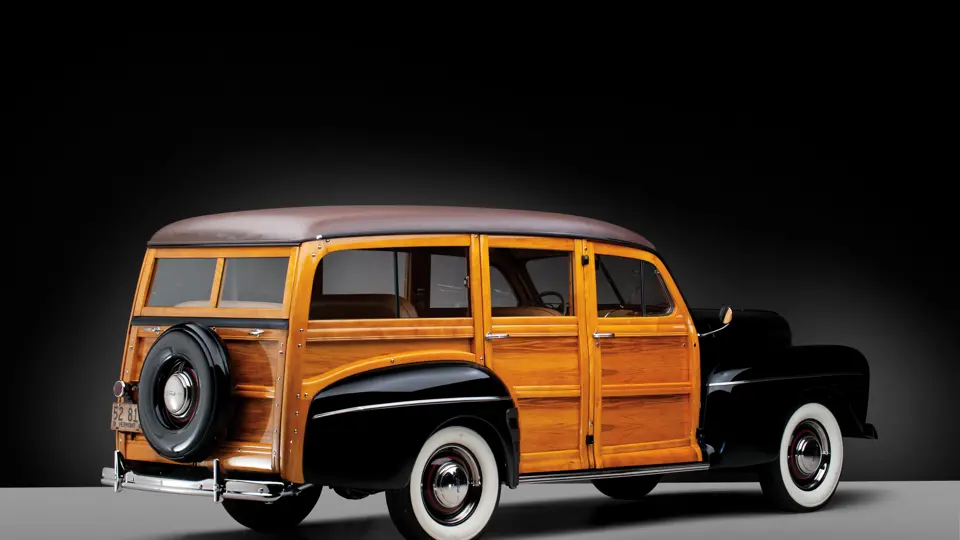
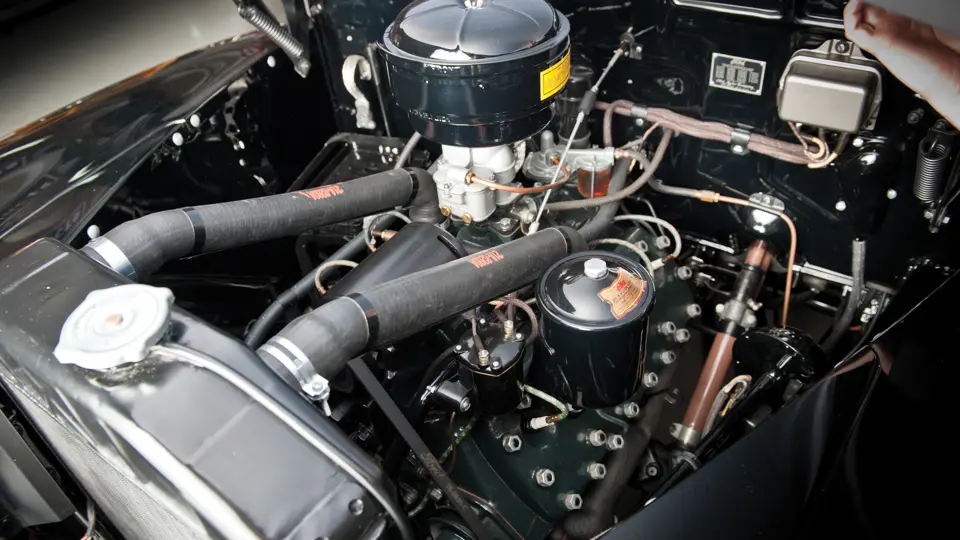




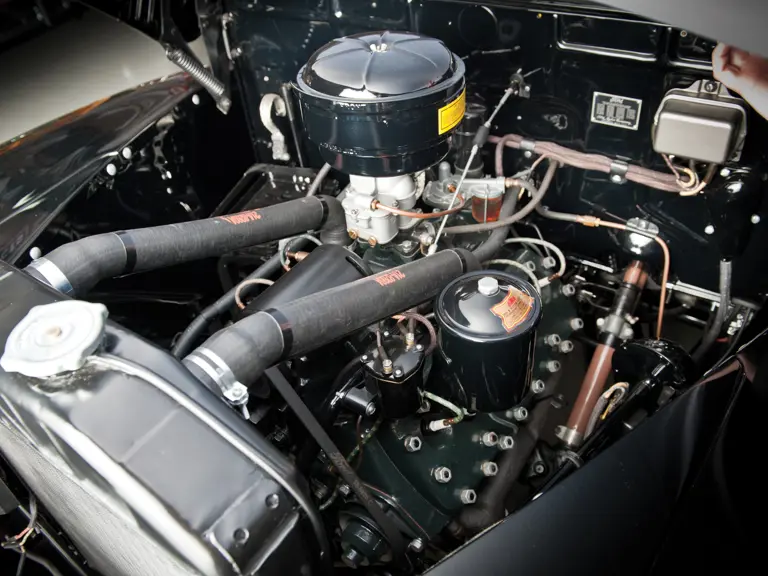
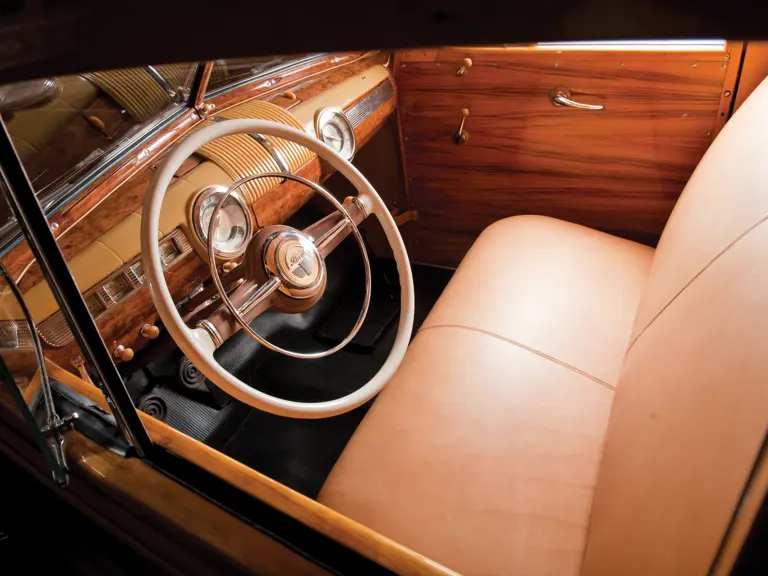


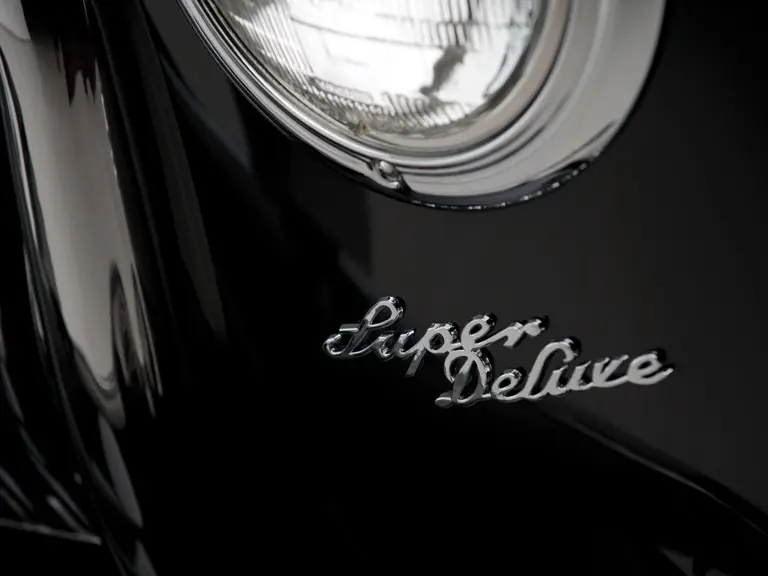
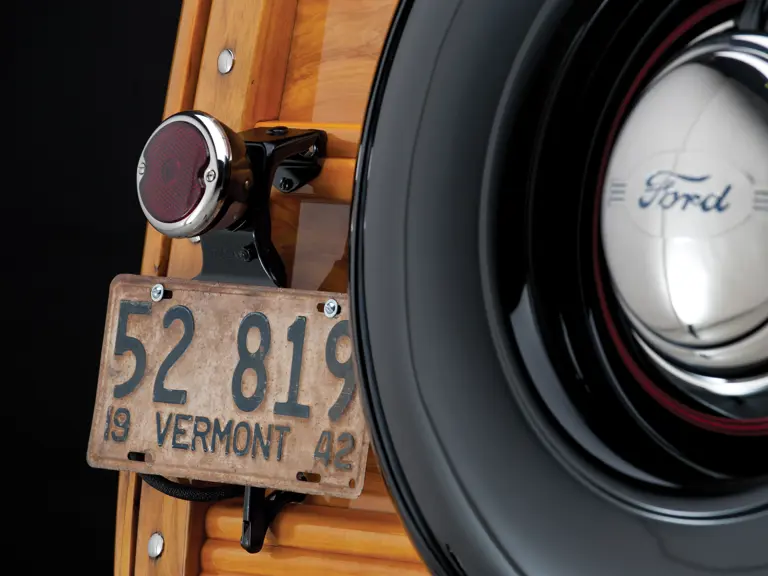
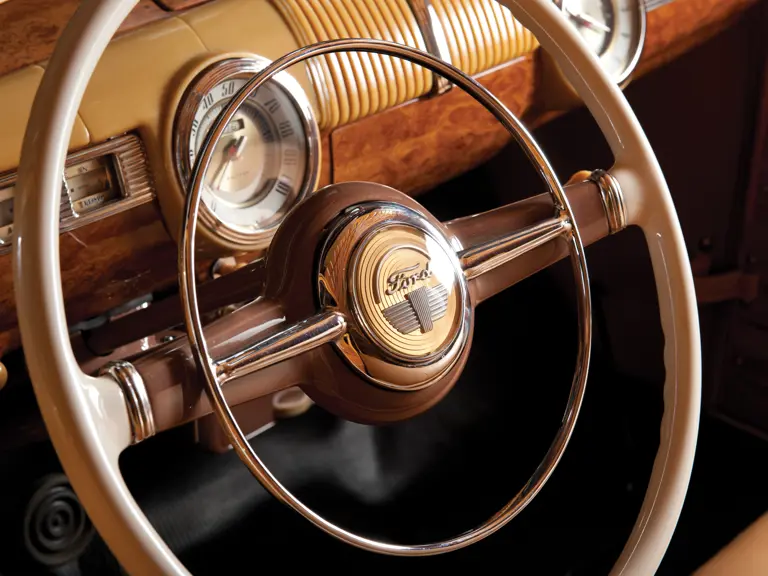


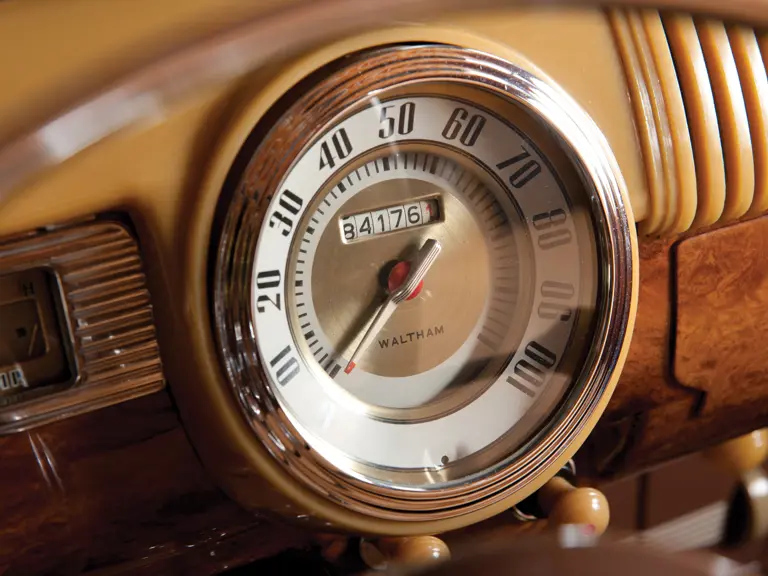

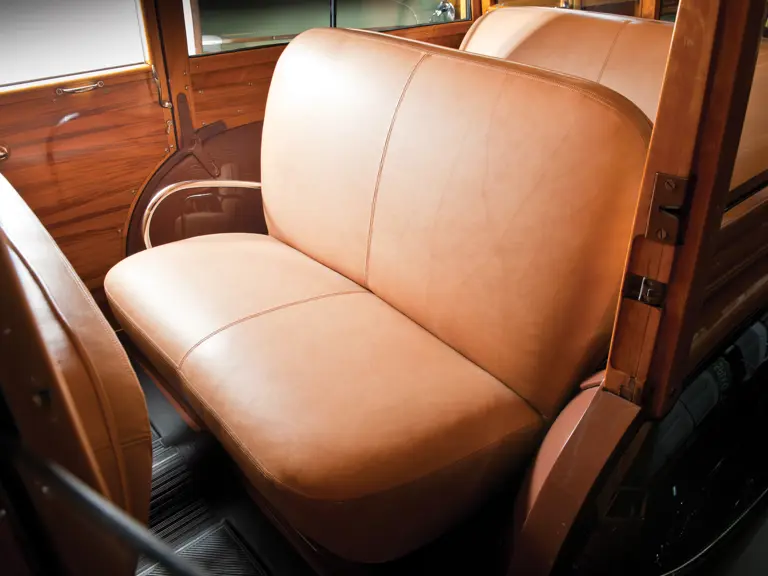
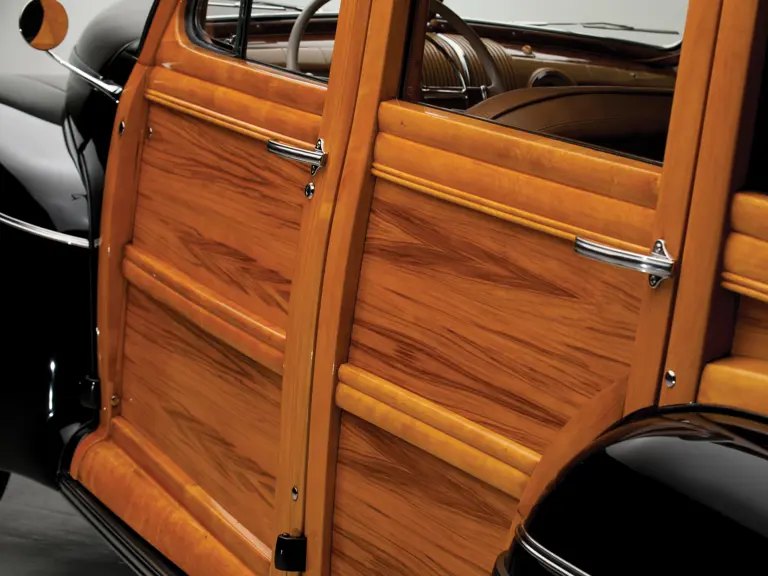
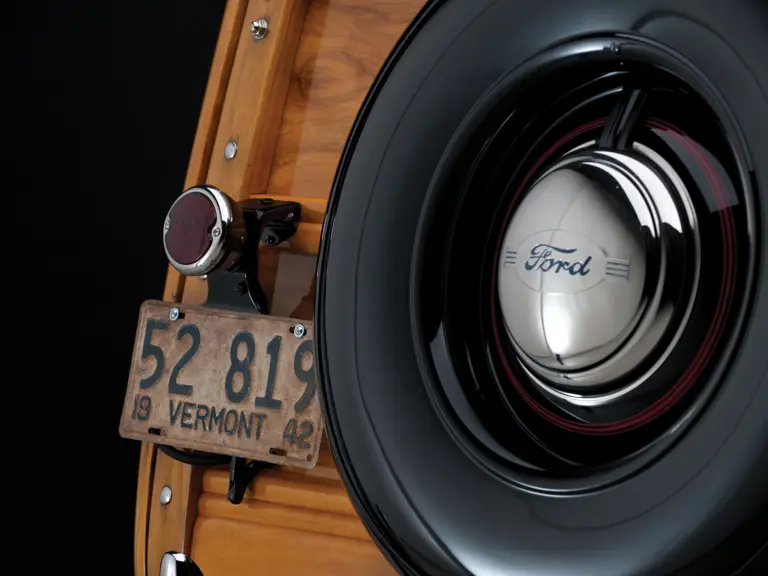

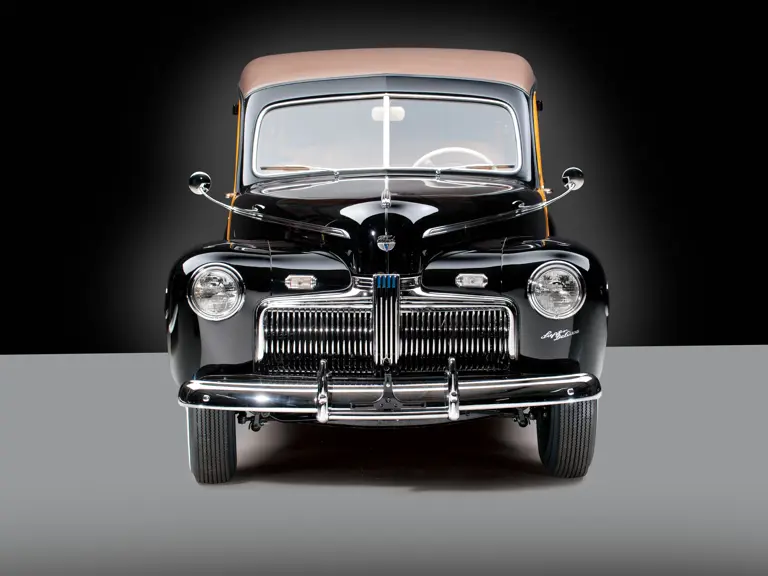
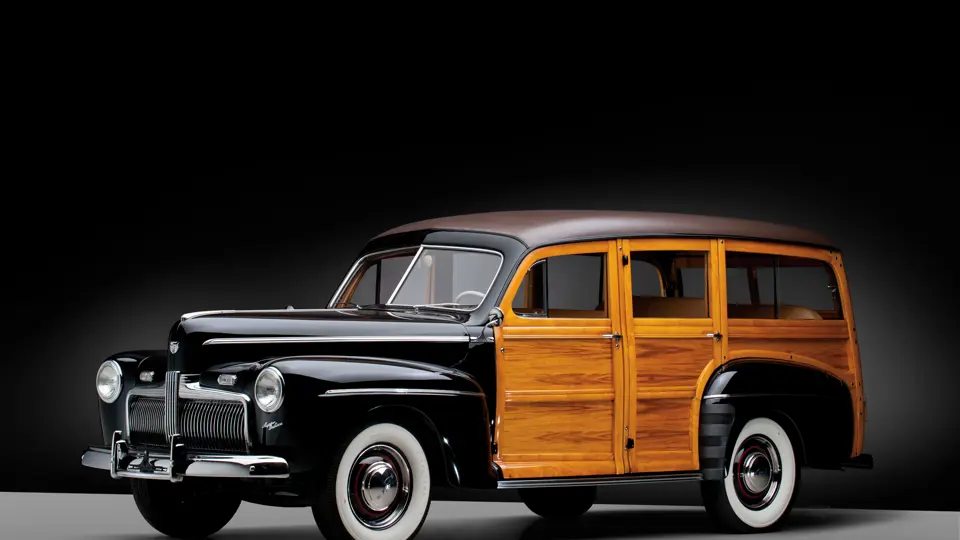
 | Hampton, New Hampshire
| Hampton, New Hampshire
